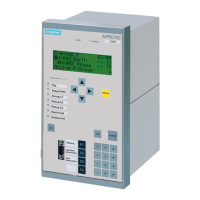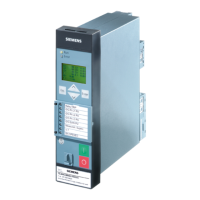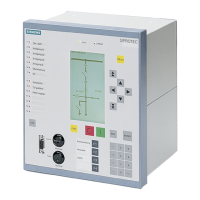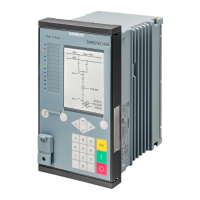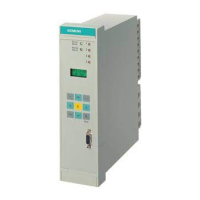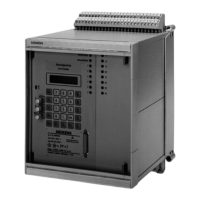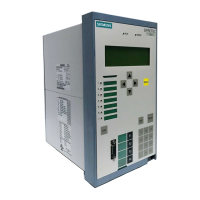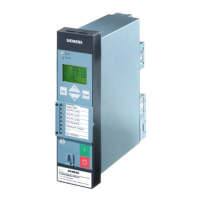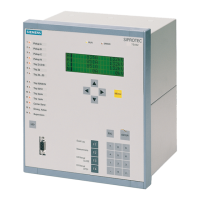2.1 General
45
7SD610 Manual
C53000-G1176-C145-4
Three-pole
Coupling
Three-pole coupling is only relevant if single-pole auto-reclosures are carried out. If
not, tripping is always three-pole. The rest of this margin heading is then irrelevant.
Address 1155 3pole coupling determines whether any multi-phase pickup
leads
to a three-pole tripping command, or whether only multi-pole tripping
decisions result
in a three-pole tripping command. This setting is only relevant with one- and three-pole
tripping and therefore only available in this version. It does not have an impact on the
differential protection since pickup and tripping are equivalent. The time overcurrent
protection function, however, can also pick up in the event of a fault occurred outside
the protected object, without tripping. More information on the functions is also con-
tained in Section 2.16.1 Pickup Logic for the Entire Device.
With the setting with PICKUP every fault detection in more than one phase leads to
three-pole coupling of the trip outputs, even if only a single-phase earth fault is situated
within the tripping region, and a further fault, for example by overcurrent, is recog-
nized. Even if a single-phase trip command has already been issued, each further fault
detection will lead to three-pole coupling of the trip outputs.
If, on the other hand, this address is set to with TRIP, three-pole coupling of the trip
output (three-pole tripping) only occurs when more than one pole is tripped. Therefore,
if a single-phase fault occurs within the trip zone and a further fault outside of it, single-
pole tripping is possible. A further fault during the single-pole tripping will only lead to
a three-pole coupling, if it occurs within the trip zone.
This parameter is valid for all protection functions of 7SD610 which are capable of
single-pole tripping.
The difference made by this parameter becomes apparent when multiple faults are
cleared, i.e. faults occurring almost simultaneously at different locations in the net-
work.
If, for example, two single-phase earth faults occur on different lines — these may also
be parallel lines — (Figure 2-2), the protection relays detect the fault type on all four
line ends L1-L2-E, i.e. the pickup image corresponds to a two-phase earth fault. If
single pole tripping and reclosure is employed, it is therefore desirable that each line
only trips and recloses single pole. This is possible with setting 1155 3pole
coupling = with TRIP. Each of the four devices detects a single-pole internal fault
and can thus trip single-pole.
Figure 2-2 Multiple fault on a double-circuit line
In some cases, however, three-pole tripping would be preferable for this fault scenario,
for example in the event that the double-circuit line is located in the vicinity of a large
generator unit (Figure 2-3). This is because the generator considers the two single-
phase to ground faults as one double-phase ground fault, with correspondingly high
dynamic load on the turbine shaft. With the setting 1155 3pole coupling = with
PICKUP, the two lines are switched off three-pole, since each device picks up as with
L1-L2-E, i.e. as with a multi-phase fault.
www . ElectricalPartManuals . com
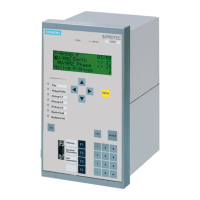
